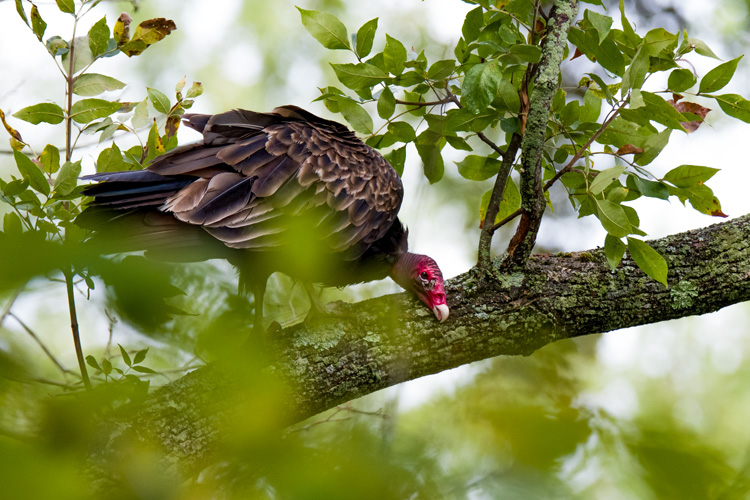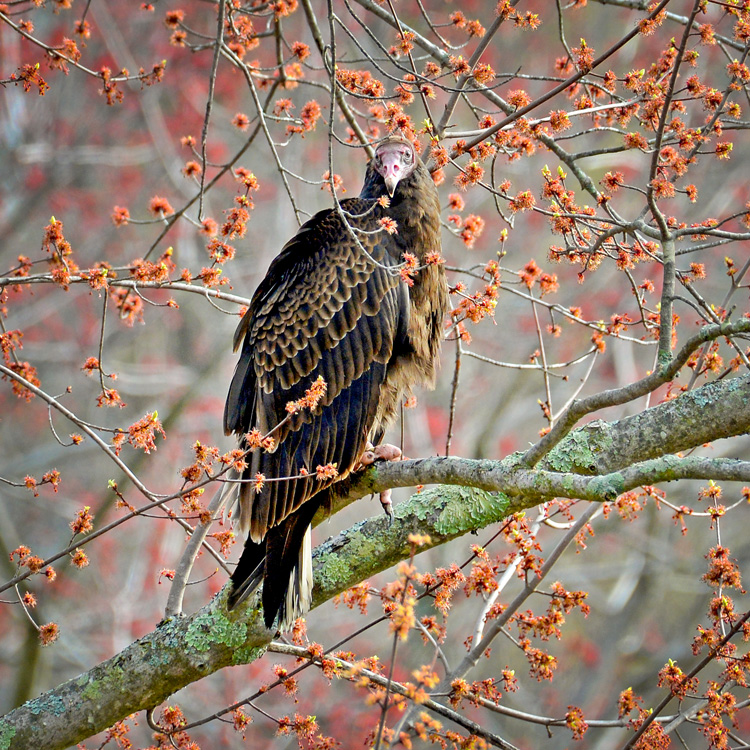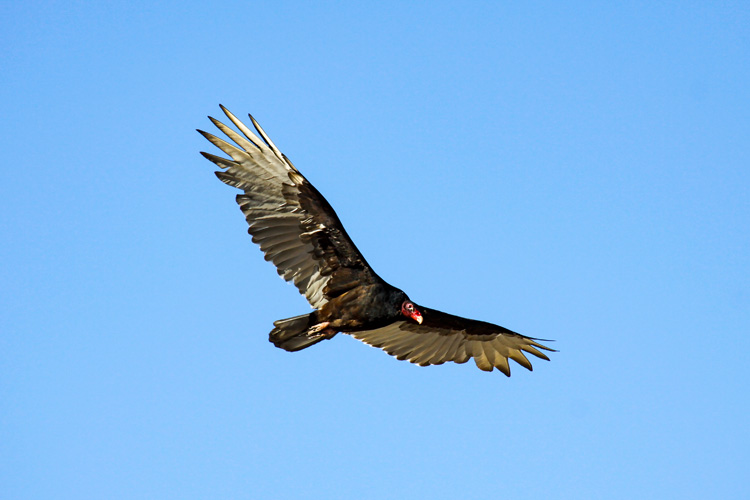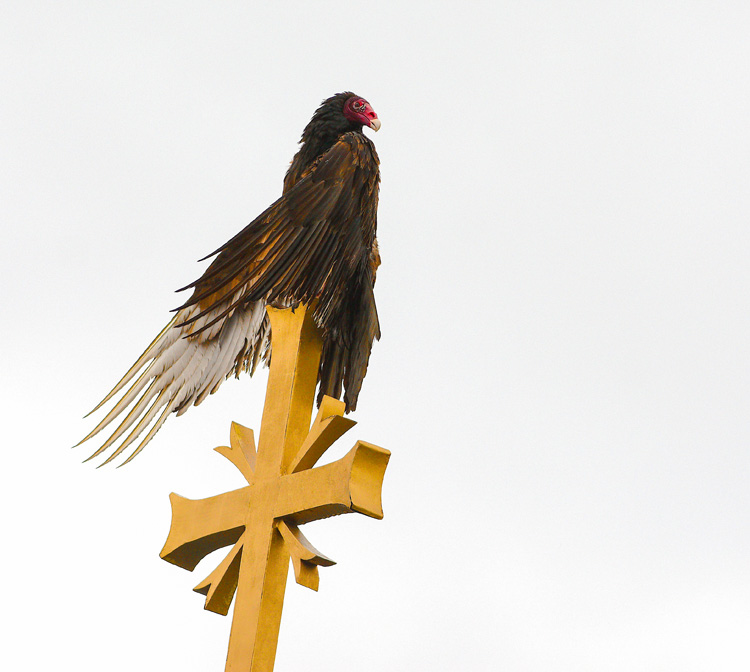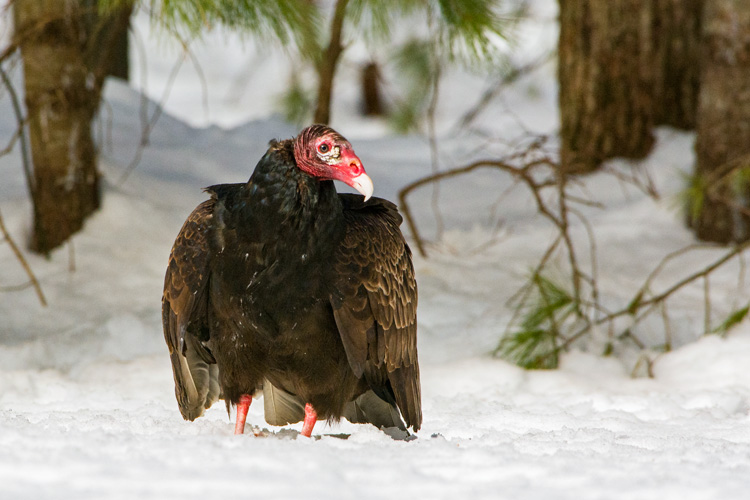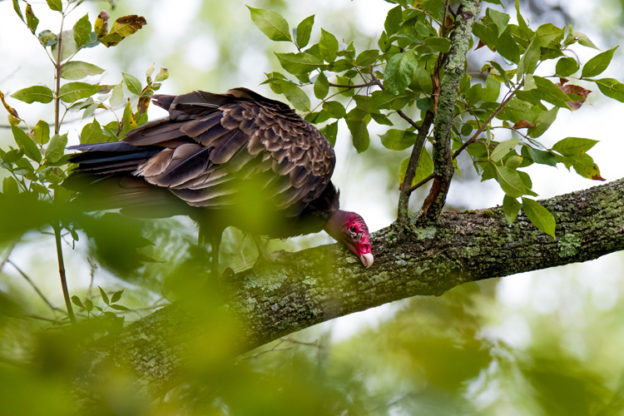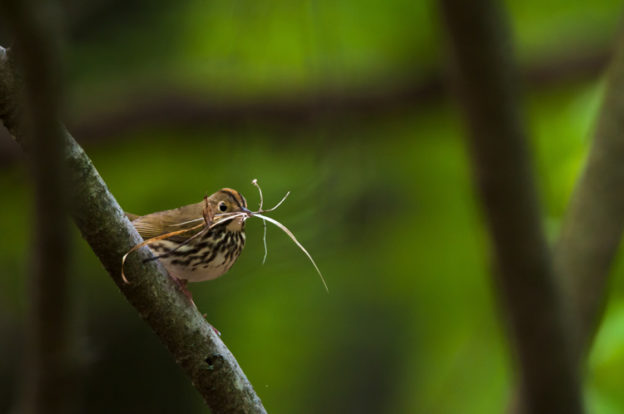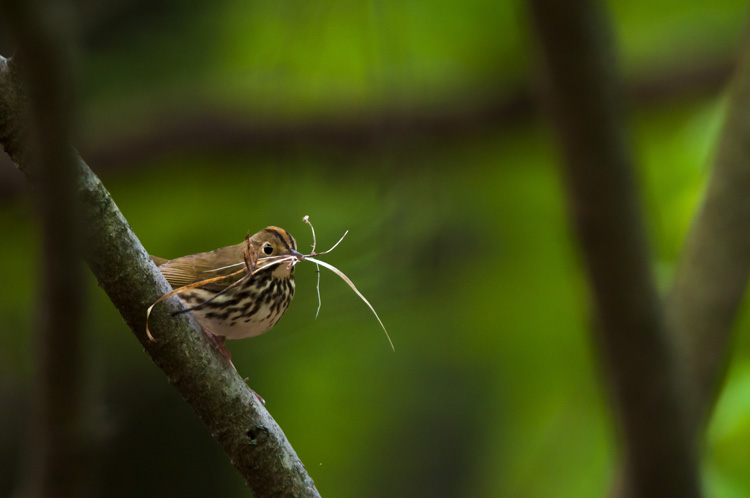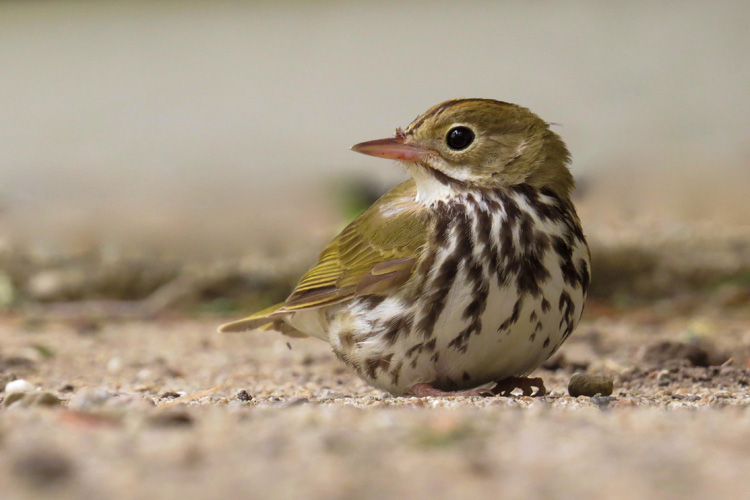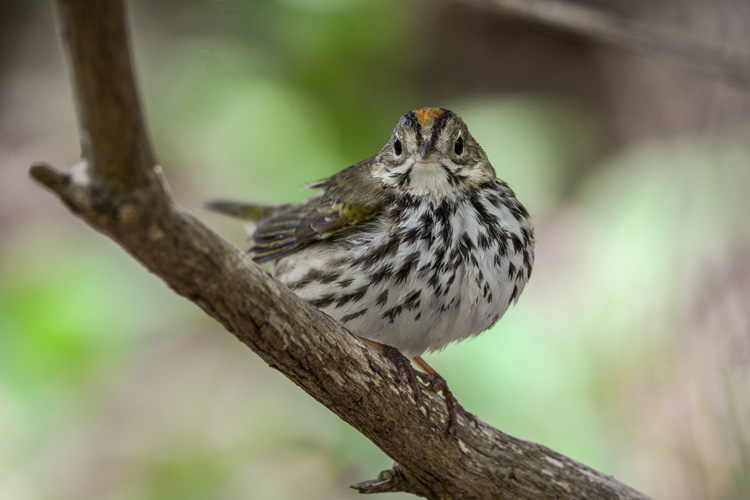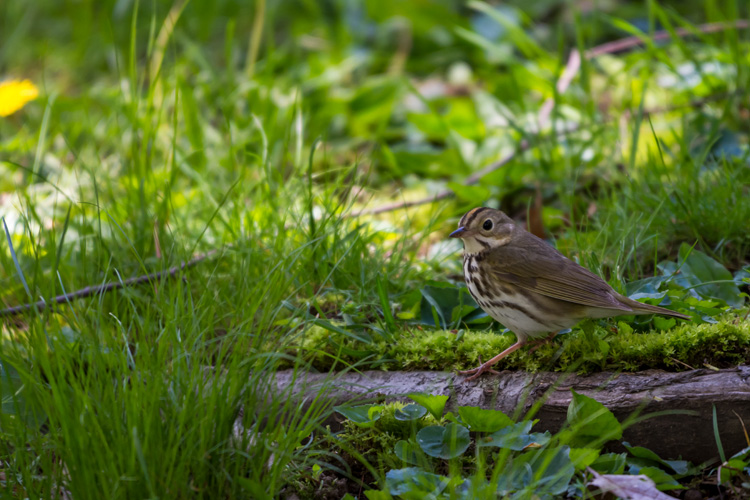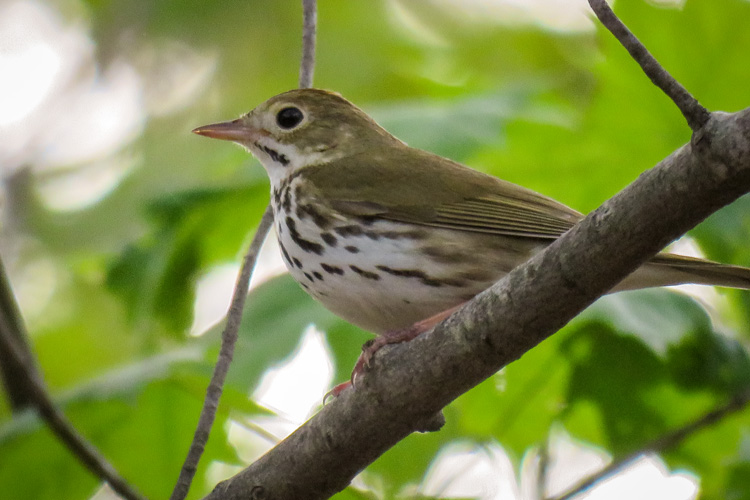This week, we’re speaking up for an invaluable member of the avian class: the Turkey Vulture. Sure, their diet of carrion (dead animals) is pretty unappetizing to us, but they are amazing birds and serve a vital function as a member of nature’s cleanup crew. A wake of Turkey Vultures (yes, even their collective name is a little morbid) can clean a carcass down to the bone in a matter of a few days!
There’s still a lot we don’t know about Turkey Vultures, but we do know they have adaptations that together allow them to take advantage of a food resource that would sicken or kill most other animals:
- Their keen sense of smell (the strongest of any bird, in fact) helps them find food.
- Their heads are naked so that they can dive right into a carcass without yucking up their feathers.
- In order to digest rotting tissue and protect themselves from pathogens like salmonella, botulism, and anthrax, they have specialized gut biomes that contain a potent cocktail of gastric enzymes, acids, and bacteria.
- Their primary defense mechanism is to vomit putrid meat onto would-be attackers.
- Unrelated to their diet, but still interesting: To keep cool in hot weather, they will defecate on their feet and legs.
And with an average wingspan just under 6 feet, Turkey Vultures are truly awesome birds. On a clear day, look for kettles of Turkey Vultures soaring on rising thermals with barely a flap of their wings, smelling for the faintest whiff of their next meal.
From April to November, you can observe one or more Turkey Vultures at Drumlin Farm’s Bird Hill exhibit, where injured or human-habituated animals that cannot survive in the wild are tended to by the Wildlife Care team—in captivity, Turkey Vultures often have inquisitive personalities and seem to enjoy interacting with different enriching stimuli provided by the caretakers. At the annual Halloween events at Drumlin Farm, one vulture has the important job of sitting on a whale bone “acting scary” and munching on a rat. Here are five photos of magnificent Turkey Vultures from our Picture This: Your Great Outdoors photo contest.
